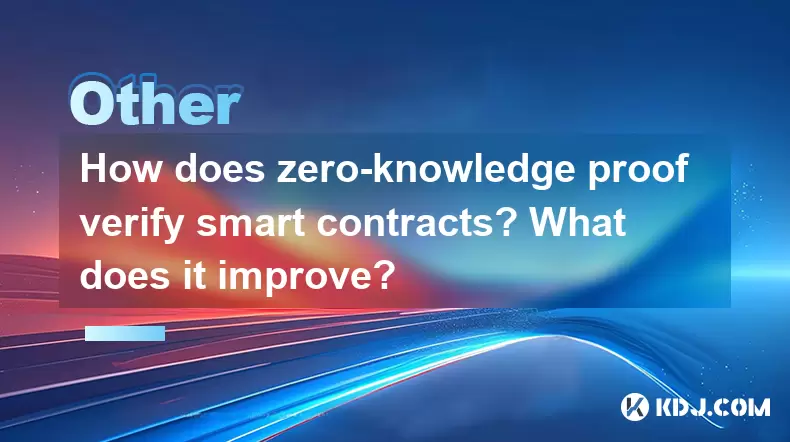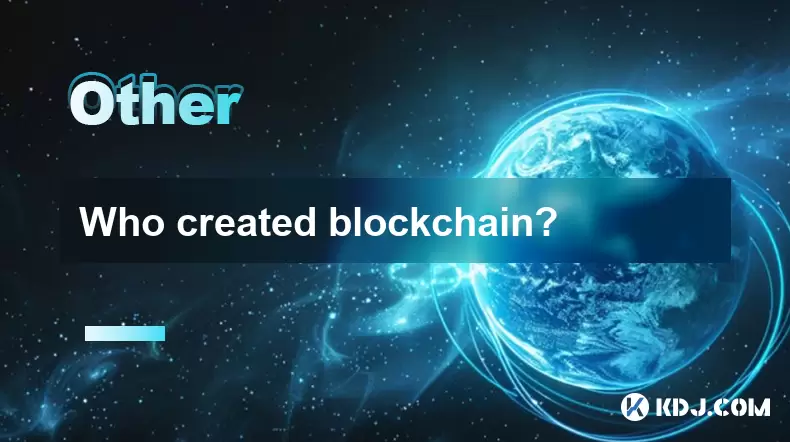-
 Bitcoin
Bitcoin $115200
-2.68% -
 Ethereum
Ethereum $3601
-5.16% -
 XRP
XRP $3.035
-2.96% -
 Tether USDt
Tether USDt $0.9997
-0.04% -
 BNB
BNB $764.5
-5.43% -
 Solana
Solana $168.1
-5.92% -
 USDC
USDC $0.9998
-0.02% -
 Dogecoin
Dogecoin $0.2090
-4.80% -
 TRON
TRON $0.3272
-0.49% -
 Cardano
Cardano $0.7306
-5.00% -
 Hyperliquid
Hyperliquid $39.16
-12.22% -
 Stellar
Stellar $0.3967
-4.96% -
 Sui
Sui $3.566
-5.95% -
 Chainlink
Chainlink $16.55
-6.57% -
 Bitcoin Cash
Bitcoin Cash $552.3
-3.90% -
 Hedera
Hedera $0.2516
-4.69% -
 Avalanche
Avalanche $21.99
-5.75% -
 Toncoin
Toncoin $3.621
-0.28% -
 Ethena USDe
Ethena USDe $1.000
-0.03% -
 UNUS SED LEO
UNUS SED LEO $8.951
0.02% -
 Litecoin
Litecoin $105.9
-3.59% -
 Shiba Inu
Shiba Inu $0.00001232
-5.00% -
 Polkadot
Polkadot $3.640
-5.55% -
 Uniswap
Uniswap $9.048
-7.03% -
 Monero
Monero $301.8
-1.51% -
 Dai
Dai $0.9999
-0.01% -
 Bitget Token
Bitget Token $4.334
-3.66% -
 Pepe
Pepe $0.00001064
-6.17% -
 Cronos
Cronos $0.1367
-5.78% -
 Aave
Aave $259.2
-4.59%
How does zero-knowledge proof verify smart contracts? What does it improve?
ZKPs enhance smart contract privacy and efficiency by verifying transactions without revealing data, improving blockchain scalability and security.
May 17, 2025 at 02:08 am

Zero-knowledge proofs (ZKPs) have emerged as a powerful tool in the realm of blockchain and smart contracts, offering enhanced privacy and efficiency. In this article, we will explore how zero-knowledge proofs verify smart contracts and the improvements they bring to the ecosystem.
Understanding Zero-Knowledge Proofs
Zero-knowledge proofs are cryptographic methods that allow one party to prove to another that a given statement is true, without revealing any information beyond the validity of the statement itself. In the context of smart contracts, ZKPs enable the verification of transactions and contract executions without exposing the underlying data.
The concept of ZKPs was first introduced in the 1980s by Shafi Goldwasser, Silvio Micali, and Charles Rackoff. It has since found numerous applications in blockchain technology, particularly in enhancing privacy and security.
How Zero-Knowledge Proofs Verify Smart Contracts
To understand how ZKPs verify smart contracts, let's break down the process into key steps:
Initialization: The prover (the party executing the smart contract) and the verifier (the party checking the execution) agree on the smart contract's logic and the conditions that need to be met.
Proof Generation: The prover generates a zero-knowledge proof that demonstrates the smart contract's execution meets the agreed-upon conditions. This proof is generated without revealing any sensitive data.
Proof Verification: The verifier checks the proof to confirm that the smart contract was executed correctly. If the proof is valid, the verifier can be confident that the contract's conditions were met without needing to know the specifics of the transaction.
Outcome: If the proof is verified successfully, the smart contract's execution is considered valid, and the transaction is processed accordingly.
This process ensures that the smart contract's execution is transparent and verifiable while maintaining the privacy of the involved parties.
Improvements Brought by Zero-Knowledge Proofs
Zero-knowledge proofs bring several significant improvements to smart contracts and the broader blockchain ecosystem:
Enhanced Privacy: By allowing the verification of transactions without revealing sensitive data, ZKPs enhance the privacy of users. This is particularly important for financial transactions and other sensitive operations on the blockchain.
Increased Efficiency: ZKPs can reduce the computational load on the blockchain network. Instead of verifying the entire transaction, nodes only need to verify the proof, which can be done more quickly and with less computational power.
Scalability: By reducing the amount of data that needs to be processed and stored on the blockchain, ZKPs can help improve the scalability of blockchain networks. This is crucial for handling a large volume of transactions.
Security: ZKPs add an additional layer of security to smart contracts. By ensuring that only valid transactions are processed, they help prevent fraud and unauthorized access to sensitive data.
Practical Applications of Zero-Knowledge Proofs in Smart Contracts
To illustrate the practical applications of ZKPs in smart contracts, let's consider a few examples:
Confidential Transactions: In a blockchain like Zcash, ZKPs are used to enable confidential transactions. Users can prove that they have the necessary funds to execute a transaction without revealing the amount or the recipient.
Identity Verification: ZKPs can be used to verify a user's identity without revealing personal information. For instance, a user can prove they are over a certain age to access a service without disclosing their exact age or other personal details.
Regulatory Compliance: In regulated industries, ZKPs can help ensure compliance with legal requirements while maintaining user privacy. For example, a smart contract can verify that a transaction meets regulatory standards without revealing the transaction details.
Implementing Zero-Knowledge Proofs in Smart Contracts
Implementing ZKPs in smart contracts involves several technical steps. Here's a detailed guide on how to integrate ZKPs into a smart contract:
Choose a ZKP Protocol: Select a suitable ZKP protocol such as zk-SNARKs or zk-STARKs based on your specific requirements. Each protocol has its own strengths and trade-offs in terms of security, efficiency, and complexity.
Set Up the Environment: Install the necessary libraries and tools for your chosen ZKP protocol. For example, if you're using zk-SNARKs, you might need to set up the
libsnarklibrary.Define the Smart Contract Logic: Write the smart contract code that includes the conditions that need to be verified using ZKPs. This could involve defining the inputs, outputs, and the logic for generating and verifying the proof.
Generate the Proof: Use the ZKP protocol to generate a proof that the smart contract's conditions are met. This typically involves running a script or function that takes the smart contract's inputs and produces a proof.
Integrate the Proof into the Smart Contract: Modify the smart contract to include the proof verification step. This involves adding code that checks the validity of the proof before executing the contract's logic.
Deploy and Test: Deploy the smart contract on a testnet or a local blockchain environment and test it thoroughly to ensure that the ZKP integration works as expected.
Audit and Verify: Have the smart contract audited by a third party to ensure its security and correctness. This step is crucial to prevent vulnerabilities and ensure the integrity of the ZKP implementation.
Challenges and Considerations
While ZKPs offer significant benefits, there are also challenges and considerations to keep in mind:
Complexity: Implementing ZKPs can be technically challenging and requires a deep understanding of cryptography and blockchain technology.
Performance: Generating and verifying ZKPs can be computationally intensive, which may impact the performance of the smart contract.
Interoperability: Ensuring that ZKPs work seamlessly across different blockchain platforms and smart contract environments can be challenging.
Regulatory Compliance: While ZKPs can help with regulatory compliance, they must be implemented in a way that does not conflict with legal requirements.
Frequently Asked Questions
Q: Can zero-knowledge proofs be used with any blockchain platform?
A: While ZKPs can be implemented on various blockchain platforms, the specific implementation details may vary depending on the platform's architecture and the available tools and libraries. Some platforms, like Ethereum, have more mature ZKP implementations, while others may require more custom development.
Q: How do zero-knowledge proofs affect the gas costs of smart contracts?
A: The impact of ZKPs on gas costs can vary. Generating and verifying proofs can be computationally intensive, which may increase gas costs. However, by reducing the amount of data that needs to be processed on-chain, ZKPs can also help lower gas costs in some scenarios. The net effect depends on the specific implementation and the complexity of the smart contract.
Q: Are there any privacy concerns with using zero-knowledge proofs?
A: While ZKPs are designed to enhance privacy, there can be concerns about the security of the underlying cryptographic protocols. It's important to use well-vetted and audited ZKP implementations to mitigate these risks. Additionally, the privacy benefits of ZKPs must be balanced against the need for transparency and accountability in certain applications.
Q: Can zero-knowledge proofs be used to verify the execution of off-chain computations?
A: Yes, ZKPs can be used to verify the correctness of off-chain computations. This is particularly useful in scenarios where complex computations need to be performed off-chain to improve scalability, but the results still need to be verified on-chain. By using ZKPs, the blockchain can ensure the integrity of these off-chain computations without needing to process them directly.
Disclaimer:info@kdj.com
The information provided is not trading advice. kdj.com does not assume any responsibility for any investments made based on the information provided in this article. Cryptocurrencies are highly volatile and it is highly recommended that you invest with caution after thorough research!
If you believe that the content used on this website infringes your copyright, please contact us immediately (info@kdj.com) and we will delete it promptly.
- Cardano Price, Pi Network, and Crypto Presales: What's the Buzz?
- 2025-08-02 08:50:12
- XRP Fund Success: Teucrium CEO Reveals Trillions on the Horizon
- 2025-08-02 09:10:12
- Challenge Coins: More Than Just Collectibles – A Military Tradition
- 2025-08-02 08:30:12
- Under the Radar: Hunting for 100x Crypto Gems in a Pi Network World
- 2025-08-02 08:30:12
- Bitcoin, Solana, and Altcoin Season: What's Hot and What's Not?
- 2025-08-02 07:10:12
- Toncoin, Rollblock, and the Token Offering Landscape: A New York Minute
- 2025-08-02 07:10:12
Related knowledge

What is the difference between a blockchain and a database?
Aug 01,2025 at 09:36pm
Understanding the Core Structure of a BlockchainA blockchain is a decentralized digital ledger that records data in a series of immutable blocks linke...

What is a hash in a blockchain?
Aug 02,2025 at 05:28am
Understanding the Concept of Hash in BlockchainA hash in the context of blockchain technology refers to a unique digital fingerprint generated by a cr...

What is a hash in a blockchain?
Aug 02,2025 at 04:43am
Understanding the Concept of Hash in BlockchainA hash in the context of blockchain technology refers to a unique digital fingerprint generated by a cr...

Who created blockchain?
Aug 02,2025 at 05:15am
What Is Blockchain and Why Does Its Origin Matter?Understanding who created blockchain begins with recognizing what blockchain actually is. Blockchain...

How to start a business using blockchain?
Jul 28,2025 at 12:36am
Understanding the Basics of Blockchain TechnologyBefore diving into the process of starting a business using blockchain, it's crucial to understand wh...

What is a token on the blockchain?
Jul 21,2025 at 07:00am
Understanding the Concept of a TokenIn the realm of blockchain technology, a token is a digital representation of an asset or utility that exists on a...

What is the difference between a blockchain and a database?
Aug 01,2025 at 09:36pm
Understanding the Core Structure of a BlockchainA blockchain is a decentralized digital ledger that records data in a series of immutable blocks linke...

What is a hash in a blockchain?
Aug 02,2025 at 05:28am
Understanding the Concept of Hash in BlockchainA hash in the context of blockchain technology refers to a unique digital fingerprint generated by a cr...

What is a hash in a blockchain?
Aug 02,2025 at 04:43am
Understanding the Concept of Hash in BlockchainA hash in the context of blockchain technology refers to a unique digital fingerprint generated by a cr...

Who created blockchain?
Aug 02,2025 at 05:15am
What Is Blockchain and Why Does Its Origin Matter?Understanding who created blockchain begins with recognizing what blockchain actually is. Blockchain...

How to start a business using blockchain?
Jul 28,2025 at 12:36am
Understanding the Basics of Blockchain TechnologyBefore diving into the process of starting a business using blockchain, it's crucial to understand wh...

What is a token on the blockchain?
Jul 21,2025 at 07:00am
Understanding the Concept of a TokenIn the realm of blockchain technology, a token is a digital representation of an asset or utility that exists on a...
See all articles

























































































